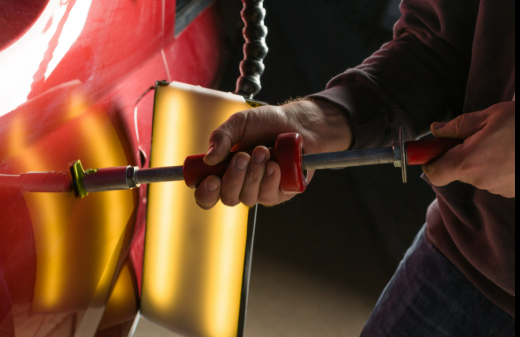The Ultimate Guide to Paintless Dent Repair

Introduction to Paintless Dent Repair
Paintless dent repair, commonly referred to as PDR, is a revolutionary technique used to restore the shape of a vehicle’s body without the need for paint or fillers. It is an increasingly popular method for fixing minor dents and dings caused by hail, door impacts, and low-speed collisions. This technique not only preserves the original factory finish of the car but also offers a cost-effective and environmentally friendly solution.
How Paintless Dent Repair Works
Paintless dent repair involves the use of specialized tools that gently push and massage the dented metal back to its original form from behind the panel. The process requires expert precision and patience. Technicians must access the backside of the dented area, which may involve removing body panels, trim, or interior components.
Unlike traditional bodywork, which involves sanding, filling, and repainting, PDR doesn’t damage the existing paint. This is possible because modern automotive paints are designed to be flexible and durable, allowing them to withstand the manipulation needed during the repair.
Benefits of Paintless Dent Repair
1. Maintains Original Paintwork
One of the primary advantages of PDR is that it retains the vehicle’s original paint. This helps maintain the car’s resale value and avoids color-matching issues that can arise with repainting.
2. Faster Turnaround Time
Since there’s no need for sanding, priming, or painting, repairs can often be completed within a few hours. This means less downtime and more convenience for the vehicle owner.
3. Cost-Effective
PDR typically costs significantly less than traditional dent repair because it doesn’t involve expensive materials or extensive labor. This makes it an ideal solution for minor cosmetic damage.
4. Eco-Friendly
With no paints, chemicals, or fillers used, paintless dent repair is an environmentally friendly option. It minimizes waste and reduces the release of harmful fumes into the atmosphere.
Ideal Conditions for Paintless Dent Repair
Paintless dent repair is suitable for:
-
Small to medium-sized dents
-
Dents with no paint damage
-
Panels made from metal (steel or aluminum)
-
Vehicles with flexible and intact paint
However, not all dents can be repaired using this technique. If the paint is cracked or the dent is too deep, conventional bodywork might be necessary.
Common Uses for PDR
-
Hail Damage: A common scenario where multiple dents cover a vehicle’s surface.
-
Parking Lot Dings: Caused by other car doors or shopping carts.
-
Minor Collision Dents: When low-speed impacts leave superficial body damage.
-
Crease Dents: As long as there’s no paint damage, even creases can be repaired with PDR.
Choosing the Right PDR Technician
When looking for a paintless dent repair specialist, consider:
-
Experience and certifications
-
Positive customer reviews
-
Transparent pricing
-
Warranty or satisfaction guarantee
A well-trained technician can make the damage virtually disappear, making your vehicle look like new again.
Conclusion
Paintless dent repair is a smart, efficient, and environmentally friendly option for addressing minor vehicle damage. It saves time and money while maintaining the vehicle’s original appearance. For small dents and dings, PDR is often the best route to take. Always consult with a qualified technician to assess whether your vehicle is a good candidate for this modern repair method.






